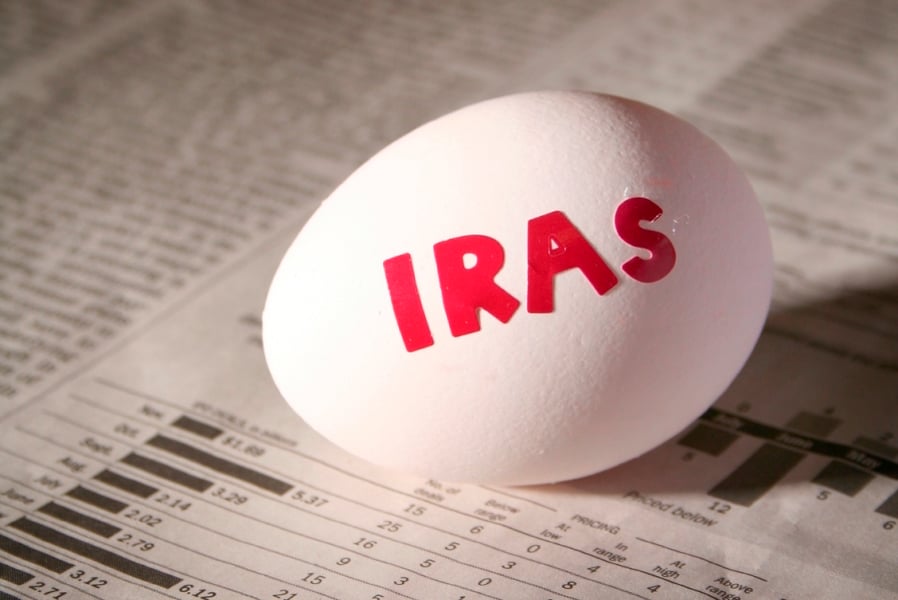

The stretch IRA era is over.
The SECURE Act is the law for 2020 and beyond. Advisers are already scurrying to explain the retirement rule changes to clients, especially those with large IRAs who had planned on a stretch IRA for their heirs. We are receiving an avalanche of questions on exactly how and when this major change will be applied.
The SECURE Act ends the stretch IRA. All of those plans have to be reviewed and probably revised. Under the now “old rules” (before 2020), an individual designated beneficiary could extend post-death “stretch IRA” required minimum distributions over his lifetime. A young grandchild might have a 70-year payout period. But no more. The SECURE Act eliminates the stretch IRA and replaces it with a 10-year payout for most beneficiaries.
Learn the strategies for inheriting an IRA post-SECURE act here.
The clients most affected are those with the largest IRAs who had planned on leaving the lion’s share of those accounts to extend over the lives of their children and grandchildren. This especially includes any clients who named a trust as their IRA beneficiary. These trusts will not work well under the new rules. These estate plans need to be readdressed immediately.
1. Are current stretch IRAs for those who died before 2020 still good? Yes, they are grandfathered, but only until the beneficiary dies, so payouts to the successor beneficiary (the beneficiary’s beneficiary) will be limited to 10 years.
Example:
An IRA owner died in 2019 and left his IRA to his grandchild. The grandchild’s stretch period is 60 years. That schedule is grandfathered and remains the same. When the grandchild dies, though, any funds remaining in the inherited IRA that go to the grandchild’s beneficiary (the successor beneficiary) will have to be paid out within 10 years. The successor beneficiary is not grandfathered.
2. Does this kill stretch IRAs for all beneficiaries? No. The law carves out exemptions for certain beneficiaries now called eligible designated beneficiaries, or EDBs. Eligible designated beneficiaries are:
• Surviving spouses.
• Minor children, up to majority – but not grandchildren.
• Disabled individuals – under the strict IRS rules.
• Chronically ill individuals.
• Individuals not more than 10 years younger than the IRA owner (generally, siblings around the same age).
The old stretch rules still apply to these beneficiaries, the same as before, but only while the beneficiaries still qualify as EDBs.
Example:
An IRA owner dies in 2020 and leaves his IRA to his minor child. The minor child can still stretch the same as before, but only until that child reaches the age of majority (which is age 18 for most states). Once the child reaches majority, he is no longer an EDB, and then is subject to the new 10-year rule.
3. Do grandchildren qualify as minors for the EDB exemption? No. The law is clear on this. The EDB exemption from the 10-year rule is only for the child of the IRA owner or plan participant.
Example:
An IRA owner dies in 2020 and leave her IRA to her grandchild. The grandchild, no matter what age, will be subject to the 10-year payout after death, unless that grandchild qualifies as disabled or chronically ill. It’s likely that a trust was named for that grandchild. That trust too, is subject to the 10-year rule. That’s probably not what the client wanted. The reason she named a trust was to protect those funds for the grandchild. Certain trusts may still do this but they would all still be limited to a 10-year payout.
4. How do the RMDs work under the 10-year rule? Are there RMDs during the 10 years? No. Under the 10-year rule, there are no RMDs during the 10 years. Instead, the entire IRA balance must be emptied by the end of the 10 years. Beneficiaries can withdraw any amounts they wish over the 10 years, so beneficiaries do have some planning flexibility during the 10 years to withdraw funds when it best fits their tax situation during that time.
5. Do Roth IRAs still qualify for the stretch? No. Inherited Roth IRAs are subject to the same 10-year payout rule, except that the distributions will generally be tax-free. Advisers will want to look at doing more Roth conversions to eliminate what could be a big tax bill within 10 years after death.
[More: There is no opportunity cost with a Roth conversion]
For more information on Ed Slott, Ed Slott’s 2-Day IRA Workshop and Ed Slott’s Elite IRA Advisor Group, please visit www.IRAhelp.com

Rajesh Markan earlier this year pleaded guilty to one count of criminal fraud related to his sale of fake investments to 10 clients totaling $2.9 million.

From building trust to steering through emotions and responding to client challenges, new advisors need human skills to shape the future of the advice industry.

"The outcome is correct, but it's disappointing that FINRA had ample opportunity to investigate the merits of clients' allegations in these claims, including the testimony in the three investor arbitrations with hearings," Jeff Erez, a plaintiff's attorney representing a large portion of the Stifel clients, said.

Chair also praised the passage of stablecoin legislation this week.

Maridea Wealth Management's deal in Chicago, Illinois is its first after securing a strategic investment in April.
Orion's Tom Wilson on delivering coordinated, high-touch service in a world where returns alone no longer set you apart.
Barely a decade old, registered index-linked annuities have quickly surged in popularity, thanks to their unique blend of protection and growth potential—an appealing option for investors looking to chart a steadier course through today's choppy market waters, says Myles Lambert, Brighthouse Financial.
